-
Posts
2,694 -
Joined
Content Type
Profiles
Forums
Gallery
Events
Articles
Posts posted by constanius
-
-
Huh... So are you thinking he only struck with a die a dozen or so times before re-engraving it? If so, would you say that's because the die needed to be re-engraved or for some other reason?
He struck over 200 examples of some pieces from a single die or at least from dies that look exactly the same. So I believe he just had variants made to strike a very small number of pieces as collector's items, at a high price of course. Bear in mind the original purpose of these was for game counters, which originally mimicked guineas up to circa 1800 but later changed to commemorate current events & people, and would mostly still have been purchased for gaming. That is why I think these extremely rare pieces are usually found in such great condition, whereas the more common pieces often show signs of wear.
-
Const, this goes way back! Are you missing some pics from this thread? The first half of your post seems more disjointed than your normally eloquent posts.
I have modified it, thanks for the very diplomatic critique, most appreciated.
-
-
This link http://www.newspapers.com/newspage/54207251/ shows the medal & a write up but you have to sign up to be able to read it(7 day free trial) Google search shows this much text from it,
Sep 10, 1970 - Twice in less than a year, the Lombardo Mint has produced an outstanding commemorative work. Its Eisenhower medal was a classic example of fine art, but the peace medal may just be its best effort. ...the late John F. Kennedy, at the extreme top; Pope John XXIII, to the right, and Martin Luther King, at roughly five o'clock.
-
The world's war suffering masses, Martin Luther King Jr, John F Kennedy & Pope John XXIII.Pacem in terris (Peace on Earth) was a papal encyclical issued by Pope John XXIII on 11 April 1963. It was the last encyclical drafted by John XXIII, who had been diagnosed with cancer in September 1962 and died two months after the encyclical's completion.The large central symbol is for Peace, originaly for used for CND, the Campaign for Nuclear Disarmament & the small 平 is Chinese for peace..
-

The above question was in reference to the "Inseparable Friends" http://www.coinpeople.com/index.php/topic/34267-can-you-separate-the-inseparable-friends-of-1814/?hl=kettle and I might have an answer, or at least a theory, thanks TDP. Here is the medal from that topic.
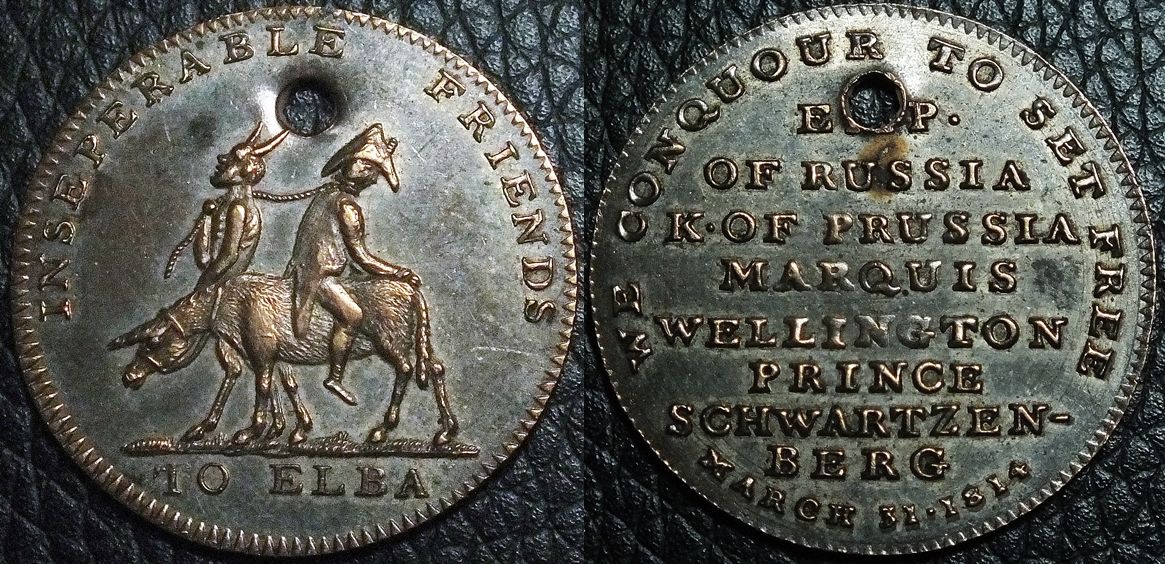 This next new acquisition picture below ticks so many boxes for me. It is, by Thomas Kettle, in great condition, a very rare variant, estimated by Fauver as only 5-10 known, only listed in AE, this is silvered, and the reverse shows signs of an unfinished die, see enlarged pic note the reverse of the 'Inseperable Friends' showing that the US in RUSSIA & the NC in PRINCE are futher engraved, whereas the NG in WELLINGTON is not, the central Q etc also had to be improved!This piece, combined with 2 other silvered Kettle pieces which are in themselves extremely rare variants and also in great condition, leads me to theorize that Kettle was producing some die variants, which perhaps he only struck in very small numbers & silvered to offer at a premium the most likely answer to TDP's great question.
This next new acquisition picture below ticks so many boxes for me. It is, by Thomas Kettle, in great condition, a very rare variant, estimated by Fauver as only 5-10 known, only listed in AE, this is silvered, and the reverse shows signs of an unfinished die, see enlarged pic note the reverse of the 'Inseperable Friends' showing that the US in RUSSIA & the NC in PRINCE are futher engraved, whereas the NG in WELLINGTON is not, the central Q etc also had to be improved!This piece, combined with 2 other silvered Kettle pieces which are in themselves extremely rare variants and also in great condition, leads me to theorize that Kettle was producing some die variants, which perhaps he only struck in very small numbers & silvered to offer at a premium the most likely answer to TDP's great question.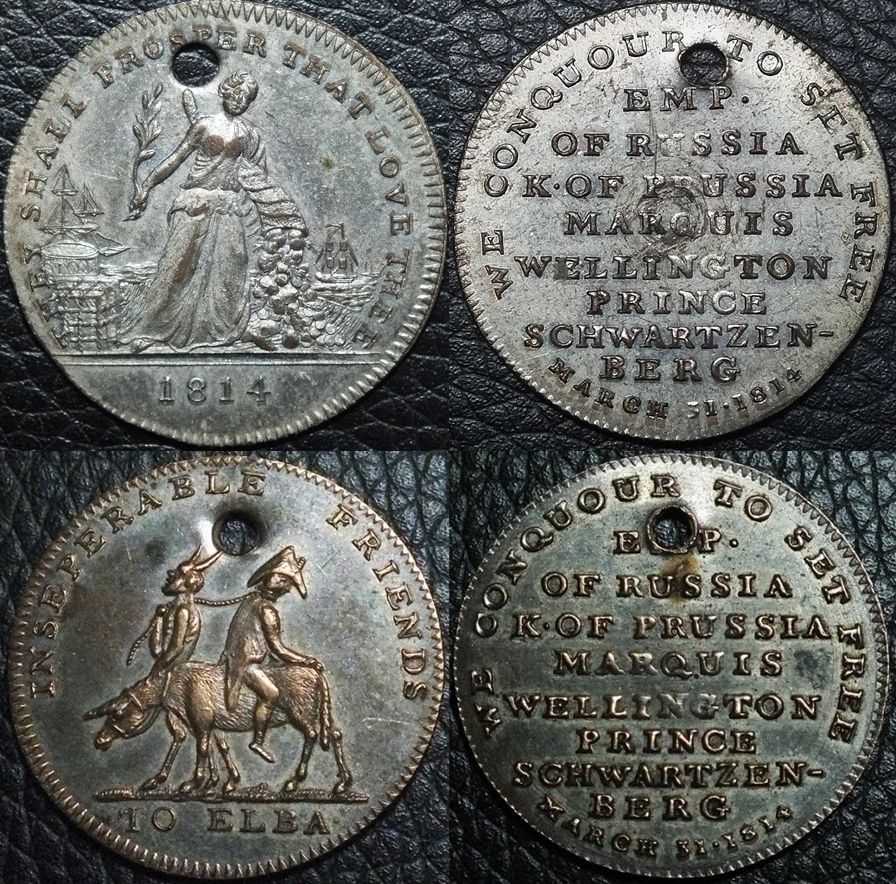
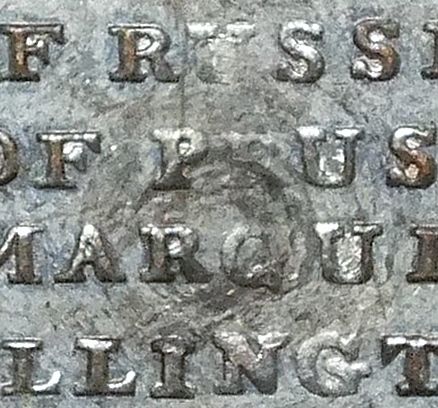 This is the other medal, unsigned variant which Fauver lists as only 5-10 known in AE unlisted in silvered, with lathe lines on reverse.
This is the other medal, unsigned variant which Fauver lists as only 5-10 known in AE unlisted in silvered, with lathe lines on reverse.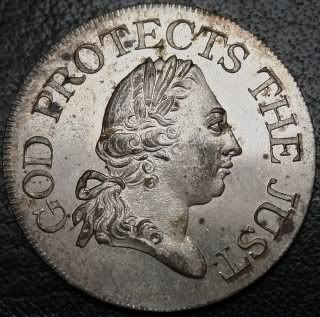
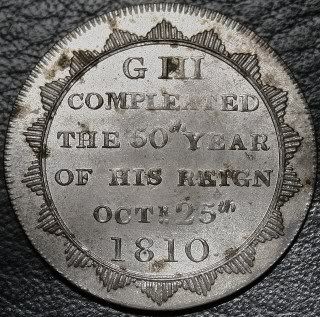
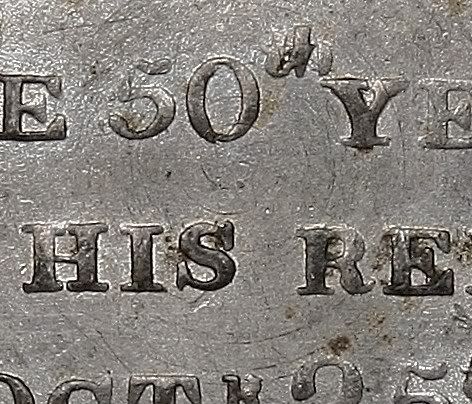 Comparison between 2 obverses, my silvered variant & the more common variety, showing how different they are.
Comparison between 2 obverses, my silvered variant & the more common variety, showing how different they are.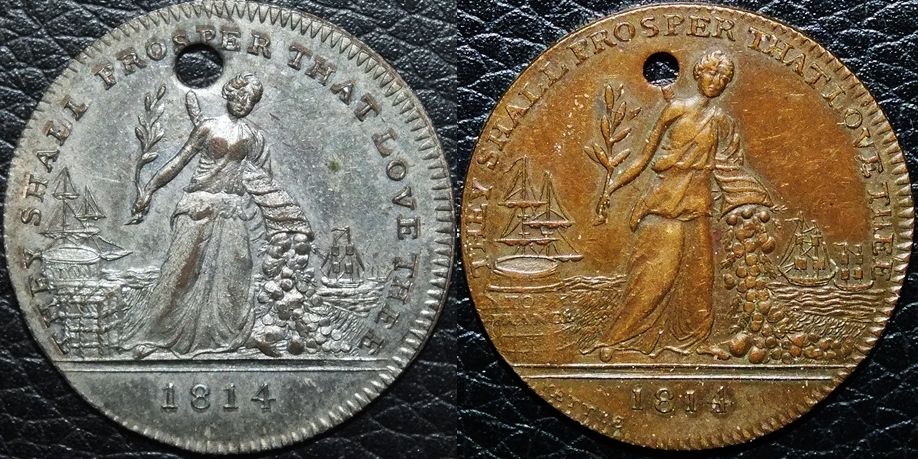
-
You can access Forrer here, just scroll down to find http://www.worldofcoins.eu/forum/index.php/topic,28876.0.html & here just scroll down to locate as well , this set is sometimes restricted sometimes not http://www.digitalbookindex.org/_search/refsearchbiodict.asp today it seems half are open, the rest restricted.
Forrer is a good resource but not always 100% reliable, which is to be expected. To anyone who is trying to identify an engraver it is indispensible.
-
Leonard Forrer, "Biographical Dictionary of Medallists, coin, gem, & seal-engravers, mint-masters-ancient & modern in 8 vol."
I had no doubt you were right re 101, I just thought the engraver & date struck were of interest, Forrer would have just repeated what he had read.
-
Congratulations
 , I assume you know the engraver was Middelthun. Forrer writes the 100 medals were struck in 1821 at the Kongsberg mint.
, I assume you know the engraver was Middelthun. Forrer writes the 100 medals were struck in 1821 at the Kongsberg mint. -
One of my earliest posts on CoinPeople in 2008 was re Ceres head by Oudine http://www.coinpeople.com/index.php/topic/20552-the-head-of-ceres-by-oudine/?hl=oudine and the opium poppies in her hair, how time flies!

-
Brilliant! That was quick. Boy, you're good.

I'm sure i've got a jeton/medalet stashed away somewhere for `La Transatlantique'. Not sure if its the one mentioned (ie by Decourcelle) I'll dig it out and scan it anyway.
Many thanks for the links.
From Ian's collection! I saw this when I was doing the search

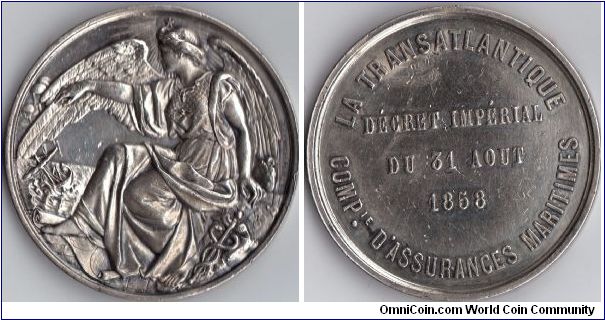
Scarcer jeton de presence issued for `La Transatlantique', one of France's maritime assurers. Engraved by F Decourcelle

Also from Ian's collection.
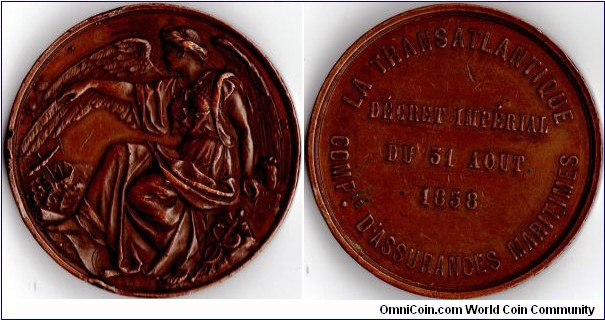
Another maybe?
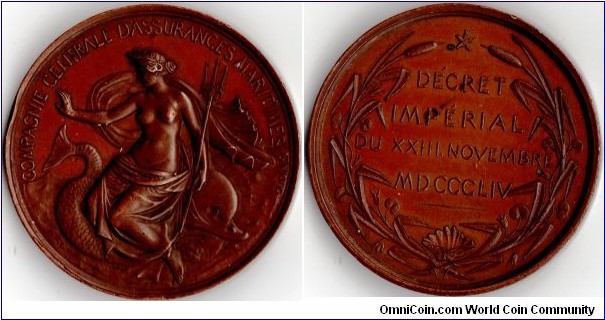
You have a great collection Ian, best wishes Pat

Edit;
http://www.cgb.fr/assurances-la-societe-dassurance-maritime-bordeaux-,fjt_04319,a.html
VOS INDUSTRIA ME SECURITAS ; à l'exergue : 2 JUIN 1863 .
Un trois-mâts sur les flots. Signé DECOURCELLE F .
-
The F was just for fecit.Louis Edouard Decourcelle born in Paris 1819. Au Palais-Royal (galerie Montpensir, 40) in 1861.Louis Edouard Decourcelle born in Paris 1819. Au Palais-Royal (galerie Montpensir, 40) in 1861.1850 Prix de Rome(scholarship) attended le Ecole des Beaux-Arts.Decourcelle (Louis Edouard), sculpteur; né à Paris, le 12 mars 1819. — Rue Vivienne, 22. Died 1900— S. 1851. Portrait de M. D...; médaillon, bronze.— S. 1852. Portrait de Mlle P. D...; médaillon, plâtre.— S. 1855. Portrait de Mme Ed. D...; médaillon, marbre.— S. 1861. Médaille en bronze, pour la C.ie d'Assurances maritimes, la Transatlantique.—S. 1863. Modèle de la médaille des prix dii collège de Chimay; médaillon, bronze.— S. 1865. Portrait de Mine L. C...; médaillon, bronze.— S. 1866. Portrait de M. E. D...; médaillon, bronze. Portraits de M. L. D... et de Mlle P. D...; médaillon, bronze.—S. 1868. Portrait de M. E. Adam, médaillon, bronze.— Prix pour la navigation de plaisance, modèle de médaille; médaillon, bronze.
-
Very nicely toned, I like the 'CM' monogram and what a fabulous guardian-angel. Who was the engraver?
-
On 10/03/2015 at 8:11 PM, thedeadpoint said:

Clearly he was a bright guy! Off the top of your head, what secondary and tertiary revenue streams did the medal makers have?
Many of them are listed as button & toy makers. Buttons were in much demand, remember they had no zips or velcro, and with the number of uniforms needed by the military & the gentlemen's servants dressed in livery, brass buttons were a constant source of income.
Metal toys were another sideline, this is a medal by John Kirk, who struck the sentimental tokens among many other medals, showing his shop

and his advert for the same, showing other items he made.
Courtesy of The Lewis Walpole Library, Yale University.
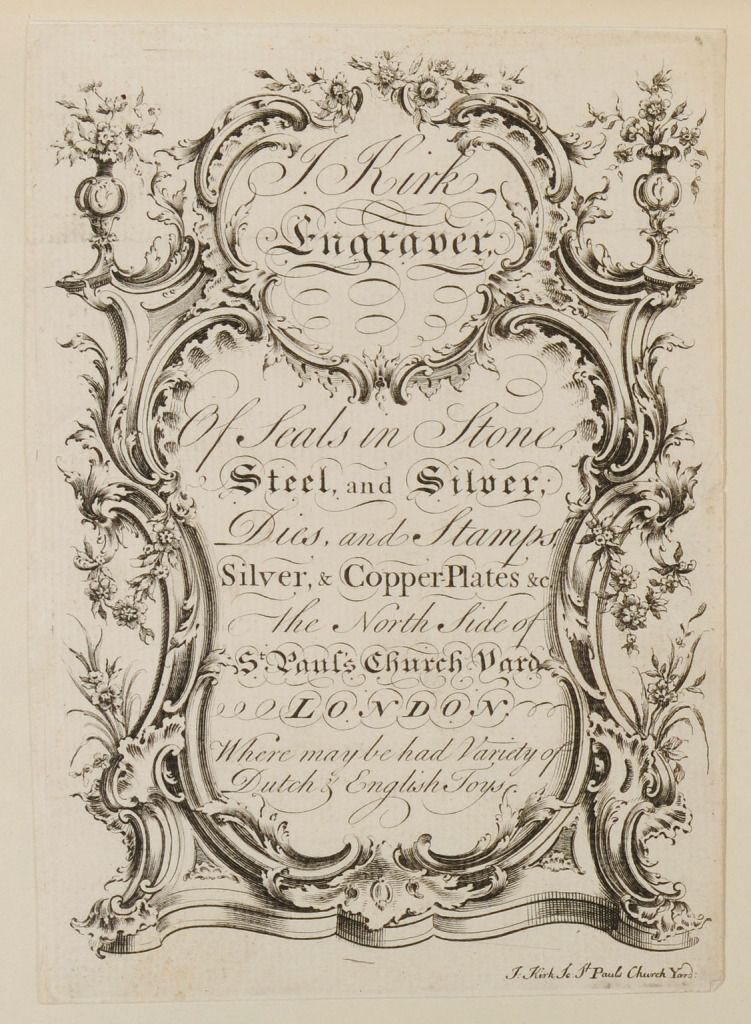
-
We know that William Bagnall was in Birmingham up to 1802 and maybe to 1805, by 1810, to at least 1811, he was at 2 Silver street, Clerkenwell, London where he said in 1810 he was a steel die engraver & tallow chandler, this might explain why he was in the candle business, from a directory for 1817,
 we know he was still there in 1812 & he is next recorded in 1815 in Seward street. So, one possibliity is, he was lodging with the Welch family at 2 Silver street and assisting with the tallow businss at first but by 1811 he states he is an engraver & a gold & silver embosser(allied with books), then by 1815 at least he is in Seward street with his 2 sons helping him in his engraving & minting work.Silver street houses were mainly 3 storey + attic wooden buildings with the ground-floor having a shop facing the street.
we know he was still there in 1812 & he is next recorded in 1815 in Seward street. So, one possibliity is, he was lodging with the Welch family at 2 Silver street and assisting with the tallow businss at first but by 1811 he states he is an engraver & a gold & silver embosser(allied with books), then by 1815 at least he is in Seward street with his 2 sons helping him in his engraving & minting work.Silver street houses were mainly 3 storey + attic wooden buildings with the ground-floor having a shop facing the street.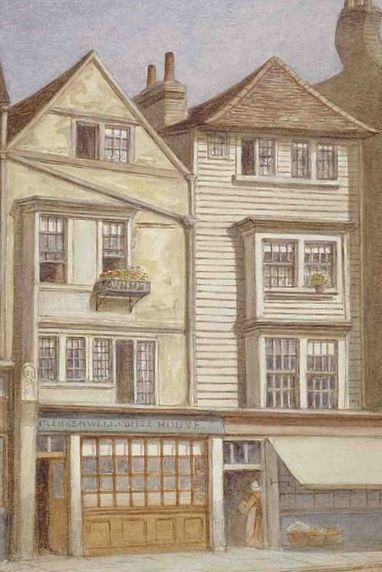 All speculation but fun.Thought I should add this to the thread from a previous post,
All speculation but fun.Thought I should add this to the thread from a previous post,
 Vendors pictures first then mine below, plus a close-up.Obv. GOD SAVE THE KINGRev. NOBE BGTA crowned harp 1696. Atkins #308.Evasion halfpenny signed by Bagnall.
Vendors pictures first then mine below, plus a close-up.Obv. GOD SAVE THE KINGRev. NOBE BGTA crowned harp 1696. Atkins #308.Evasion halfpenny signed by Bagnall. -
Here are just one example of the E's from each of the 4 medals, ignore the apparent slight variation in size as they are in fact the same size, just not in my composite picture. The very long thin upper & lower horizontal bars and the middle wedged shaped middle bar are quite distinct, as is the slight bow to the upright bar. Keep in mind that they all have had varying degrees of wear which affects the breath of the letters slightly. Die lettering/punch analysis can be quite an asset in attributing engravers to unknown medals.

-
Very cool find, const. I bet it's much easier doing the forensics with coins in hand than via books or the internet.
So true TDP, in fact the only images on the internet seem to be mine
 and there does not appear to be any in print either!
and there does not appear to be any in print either!I find it interesting that we know that Bagnall was juggling at least his die engraving with candle-making, embossing & finally counterfeiting to make a living & who knows what else?
The area he was living in, after he had relocated from Birmingham, Clerkenwell in London, was full of poor class trades people, button-makers, engravers, jewelers, book-makers & binders etc, & it seems his embossing was to do with the book trade as he was mentioned under London book trade personnel in Holden’s directory for 1811.
Shows how hard it was for him to keep his head above water and so eventually he turned to counterfeiting. Then the authorities caught up with the poor guy & he ends up being transported to an Australian penal colony & adding schoolmaster to his résumé
.
-
I have been fortunate enough to acquire an example of the medal in the Greenwich Museum, which I used at the begin of this topic, that had been the only example of that unlisted medal that I was aware of and is brass, as you can see the one I have acquired is copper.
The small 20mm medals below it are from a set of four and the engraver was previously unknown, until now. When I acquired the Bagnall 1802 I was so interested its uniqueness & then when I realized he had altered Davies die for the scenic side I rather ignored the reverse but having the two together I started looking at the letters more closely, the E's are particularly unique, and compared them with the smaller medals which are a match, as are all the letters. Even the "27" in the dates are a perfect match, so Bagnall used the letter & number punches he acquired from Davies on his 1802 reverse & on the last 2 medals in the set of 4 which were previously by ? So Bagnall was the engraver of the last 2 in the set, one dated 1802 the other undated and issued them singularly then sold all 4 in a boxed set in 1805(according to BHM), whereas Davies presumably engraved the first 2 dated 1801 and issued them singularly in 1801.
So I believe Davies should be given credit as the engraver for the first 2 dated 1801 and Bagnall the last 2 & for the boxed set.
1. Preliminaries of Peace signed, 1801. BHM#5202. Preliminaries of Peace ratified, 1801. BHM#5213. Definitive Treaty signed, 1802. BHM#5464.British Commerce, undated. BHM#600all 20mm only listed in brass.1805 Boxed set: A 22mm brass box with a uniformed bust of Lord Nelson, bare head, left, on the lid containing the 4 above medals. BHM#598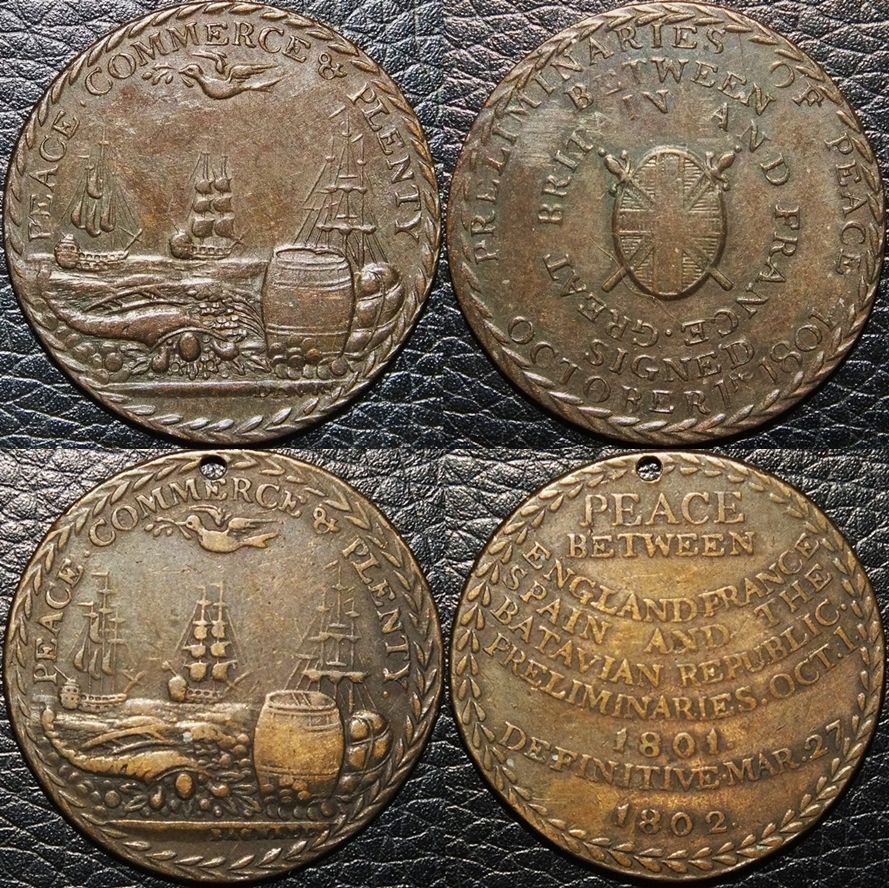

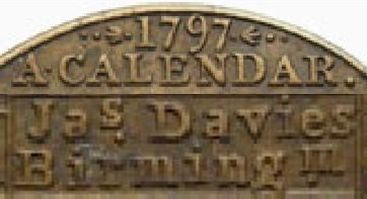

Note the 1802 I attribute to Bagnall has no flourishes, whereas the 1801 I attribute to Davies has, now look at this composite of Davies 1797 Calendar medal(sorry, not to scale) and you can see the punches used for its flourishes he used again for the 1801 Preliminaries Ratified.
As for William Bagnall himself, I have managed to find another address for him in London & 2 other occupations he engaged in;
1810 trial witness & robbery victim:WILLIAM BAGNALL . I live in Silver street, Clerkenwell. I am a steel die engraver and tallow-chandler 1810.From London book trade personnel in Holden’s directory for 1811Bagnall, William: Die engraver and gold and silver embosser No 2, Silver Street Clerkenwell Green 1811.Bagnall WilliamNo. 9, Seward street, Clerkenwell, 1815. -
It is listed in Battyʾs Catalogue of the Copper Coinage of Great Britain, Ireland ..., Volume 2
Yours is 4236e

-
Welcome from an expat
 for a couple of years in the early 70's I lived just down the road from you in Bletchley.
for a couple of years in the early 70's I lived just down the road from you in Bletchley. -
Here is another, WM. 32mm. ,BHM. #1612 RRR.
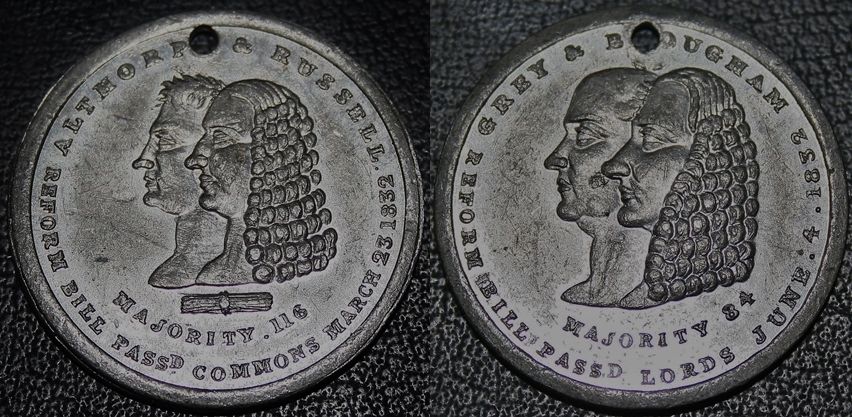
-
Very nice, looks stunning

-
Very nice medal
 but should it not be the Republic of the Seven United Netherlands 1779 because it predates the Batavian Republic(proclaimed1795) by 16 years? Unless the medal was struck that much later than its date.
but should it not be the Republic of the Seven United Netherlands 1779 because it predates the Batavian Republic(proclaimed1795) by 16 years? Unless the medal was struck that much later than its date.Here is an almost unique medal(I only know of one other) which happens to mention the Batavian Republic.
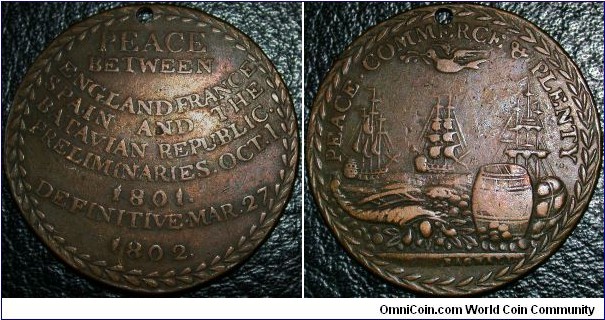
-
Having been continuing the discussion on the other website http://www.worldofcoins.eu/forum/index.php?topic=29205.0 and I discovered that the lettering is consistent with early Carolingian text from circa 800 AD, what looks like our modern J was how their Long(uppercase) I was written.
Early Carolingian script sometimes still used the long & short i(longa & brevis) used in earlier scripts, this was soon abandoned and only i brevis used but i longa was indicated by using a descender, making it resemble our modern J, though it is a capital I.
Ninth century Carolingian manuscript of a text by Sulpicius Severus. http://employees.oneonta.edu/farberas/arth/arth212/Carolingian_Culture/carolingian_scripts.html

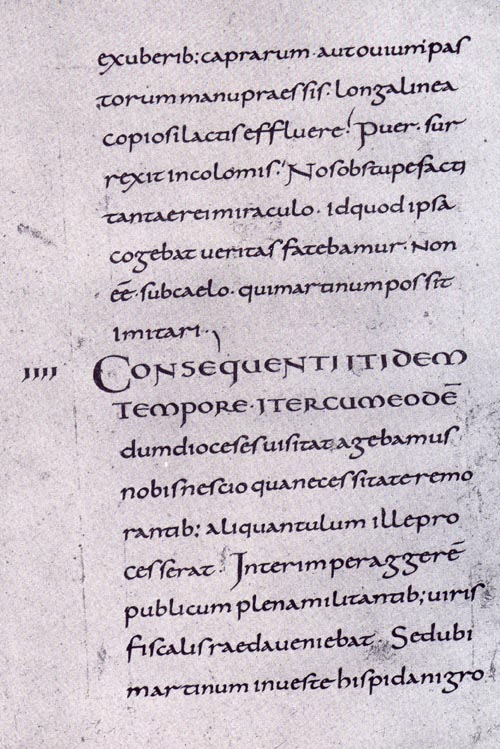



Need help findin out what this token is
in Coin Forum
Posted
Is it this bronze medal? The seller did not show size but I believe it is approx 28mm. http://www.ebay.com/itm/ANDREW-JOHNSON-FRANKLIN-MINT-PRESIDENTIAL-HALL-OF-FAME-COMMEMORATIVE-MEDAL-/281610312172 and produced for Shell in 1973. If it is aluminum it is from the 1968 set, there is even a 1992 set in a brassy looking metal.
This link gives a lot of info http://www.coins-n-medals.com/Exhibits/ShellGames/ShellPresidentsGame.html